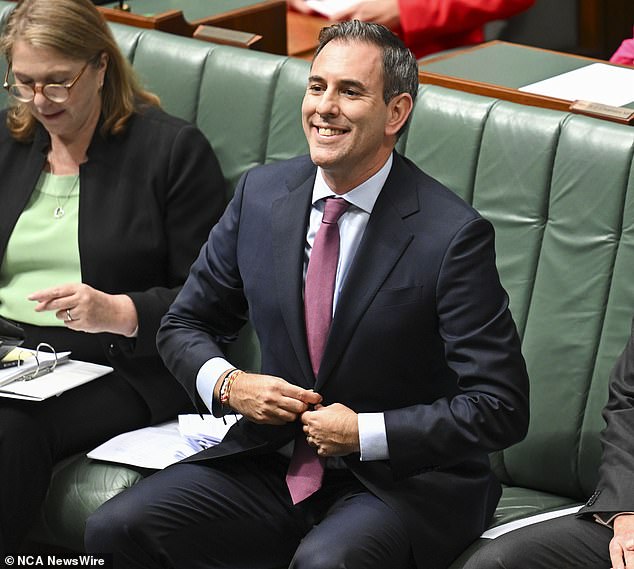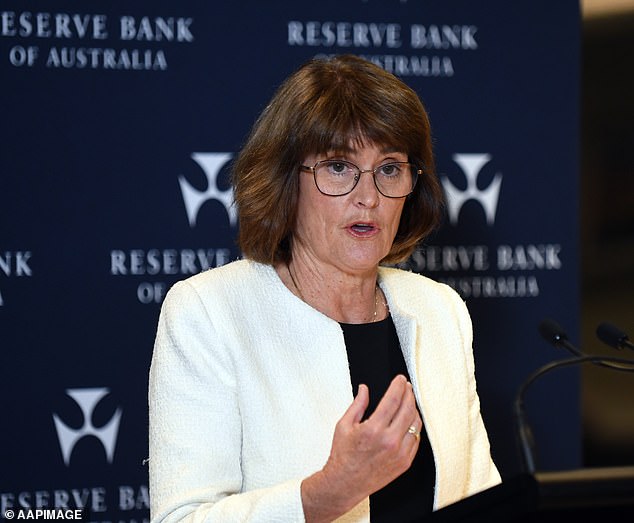An interest rate cut could be on the table in February, when the Reserve Bank meets for the first time in 2025, even though the cost of some goods and services is rising.
Australian Bureau of Statistics data released on Wednesday showed prices rose 2.3 per cent in the year to November, up from 2.1 per cent in the year to October.
Despite the rise in the headline inflation rate, there has been a cooling in significant underlying inflation – which excludes irregular or temporary price changes – which could open the door to interest rate cuts.
Wednesday’s figures show consumers are enjoying a reprieve at the gas pump and paying electricity bills, but rents and groceries are still rising sharply.
Prices for electricity fell by 21.5 percent and automobile fuel by 10.2 percent, but food and beverages rose by 2.9 percent, alcohol and tobacco by 6.7 percent, and recreation and culture increased by 3.2 percent.
The bureau’s monthly report provides guidance on price movements but is more volatile than the quarterly figures, which the Reserve Bank of Australia tracks more closely.
The cut average measure cooled to 3.2 percent in November, down from 3.5 percent.
The November figure was also slightly below the Reserve Bank’s last projection from December, and potentially low enough to convince the bank to cut rates at its February 18 meeting.
Michele Bullock said the RBA believes inflation is coming under control despite keeping the interest rate at 4.35 per cent at its final board meeting for 2024.
The RBA held the interest rate steady at 4.35 per cent at its last meeting of 2024, but Governor Michele Bullock revealed the board was of the view inflation was being brought under control.
Commonwealth Bank is the only one of the big four banks to have stuck to its original rate forecast, expecting the first rate cut to come in February.
Meanwhile, NAB, Westpac and ANZ, which had previously forecast a first rate cut in February, expect the first rate cut to come in May.
Canstar head of data analytics Sally Tindall warned borrowers not to count on a drop in rates.
“If you have a mortgage, don’t cross your fingers and hope for the best,” he said.
‘Take advantage over the summer by lowering your interest rate as much as possible, whether by haggling or refinancing.
“That way, when the RBA cuts finally come, you can have your cake and eat it too.”
Krishna Bhimavarapu, economist at State Street Global Advisors APAC, said, “We can now say with confidence that disinflation is proceeding apace.”
“The trimmed annual average (3.2 per cent) continued to move towards the Reserve Bank of Australia’s target band and, on a more encouraging note, inflation in the new homes category was the weakest since mid-2021” , said.
The central bank has been putting more emphasis on measures of core inflation as they are better protected from volatility and temporary price changes stemming from measures such as energy bill relief.
Treasurer Jim Chalmers said both the headline and the underlying numbers were going in the right direction.
“Headline inflation has now been in the bottom half of the Reserve Bank’s target band for three consecutive months, for the first time since 2021,” he told reporters on Wednesday.
“We know that inflation does not always moderate in a perfectly straight line,” he said.
‘These new figures are an important reminder of the substantial and sustained progress we have made in the fight against inflation.
‘When we came to power, inflation was six and was increasing. Now inflation has a two ahead.’

Treasurer Jim Chalmers said inflation was heading in the right direction despite the headline inflation rate seeing a spike in the latest figures.
For Paula Gadsby, senior economist at EY, evidence of persistent services inflation in Wednesday’s consumer price index was a reason for the RBA to remain cautious.
The economist said the central bank would need more evidence that prices were moderating relative to the December quarter inflation figures, which will be published at the end of January, and ahead of the RBA’s February meeting.
“Lackluster productivity growth, a resilient labor market and strong public spending could keep inflation high,” he said.
“This likely indicates that the Reserve Bank board will keep the cash rate at 4.35 per cent for the first quarter of this year, and possibly beyond.”
In fact, November’s headline annual inflation rate inched up to 2.3 percent, from 2.1 percent.
While an increase was expected, the rebound slightly exceeded expectations for a 2.2 percent result.
ABS head of price statistics Michelle Marquardt said the rise in annual headline inflation partly reflected the timing of government energy subsidies.
“In some states and territories, households received two rebate payments in October instead of receiving no payment in July,” he said.
“As of November, most households received a single payment.”


